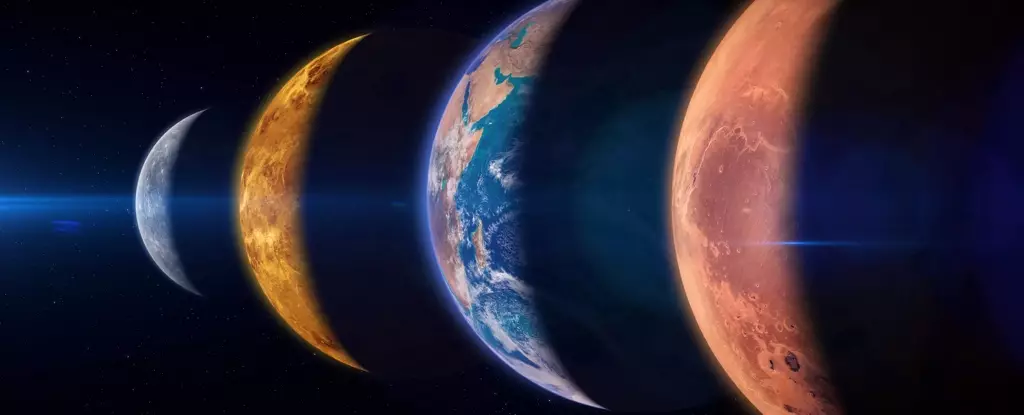Mark your calendars for the evening of February 28, 2025, when the night sky will play host to an extraordinary celestial display. For the first time in years, all seven planets of our Solar System—Saturn, Mercury, Neptune, Venus, Uranus, Jupiter, and Mars—will align in what is known as a great planetary alignment. This event promises to be a breathtaking visual feast, unlike anything many of us have had the chance to witness.
While it’s common for a few planets to be observable in proximity due to their positioning on the same side of the Sun, the simultaneous alignment of all seven planets is a rarity that astrophysics enthusiasts and casual stargazers alike will not want to miss. The term “alignment” can refer to several configurations, ranging from three to eight planets grouped together. A gathering of five or six is considered a large alignment, but the occurrence of all seven planets in a neat row is significantly less frequent, making the upcoming event particularly special.
Contrary to simplified illustrations often encountered in textbooks, planetary alignments do not form perfect linear arrangements in the physical universe. Instead, the planets follow the ecliptic plane—an imaginary flat disk that emerges from the Sun’s formation, where the vast multitude of celestial bodies orbit. The orbits of these planets may be slightly tilted, but they generally adhere to this plane, much like a series of grooves on a vinyl record.
This alignment occurs when the planets align on the same side of the Sun. This is much like balancing marbles at the edge of a table; when all the marbles are on the same side, it creates a beautiful, uninterrupted line. As the planets follow their respective orbits, they occasionally converge at a vantage point on Earth. February 28 will be one of those rare moments when the planets are positioned for optimal viewing from our terrestrial perspective.
Whether you’ll be able to see this incredible alignment in its full glory depends largely on your geographical location. The alignment will be more prominent in certain regions, offering viewers unique perspectives depending on the time of night. Fortunately, tools and apps exist to help you map this celestial event and ensure you have the best chance of catching a glimpse.
Interactive tools, such as those provided by Time and Date, allow you to input your geographical details so you can track the rise and set times for each of these planets. This means you’ll be able to plan precisely for the best viewing experience. Similarly, Stellarium offers a web-based platform that outlines the positions of all celestial bodies during the alignment, making it easier to identify where to look in the sky.
For a more hands-on approach, the Sky Tonight mobile application can leverage your phone’s GPS to provide real-time updates on your local sky. By tapping into the app, you’ll gain insights on the visibility of each planet, as well as which instruments might enhance your observational experience. Investing in binoculars or a telescope may be necessary for those eager to see the intricate details of these distant worlds.
Embrace the Stellar Wonder
With clear skies and a bit of luck, the planetary alignment on February 28, 2025, could become a remarkable experience—invoking awe and curiosity about the vast universe. In a world that continually shifts and changes, such celestial displays act as essential reminders of the beauty and wonder surrounding us.
So, mark this date, gather your viewing tools, and prepare to engage with the cosmos. The grand planetary alignment will not only provide a glimpse into our Solar System’s dynamics but also offer a renewed perspective on our place within the universe. Don’t forget to share your experiences with fellow astronomers and budding stargazers and inspire others to appreciate these rare cosmic events.

